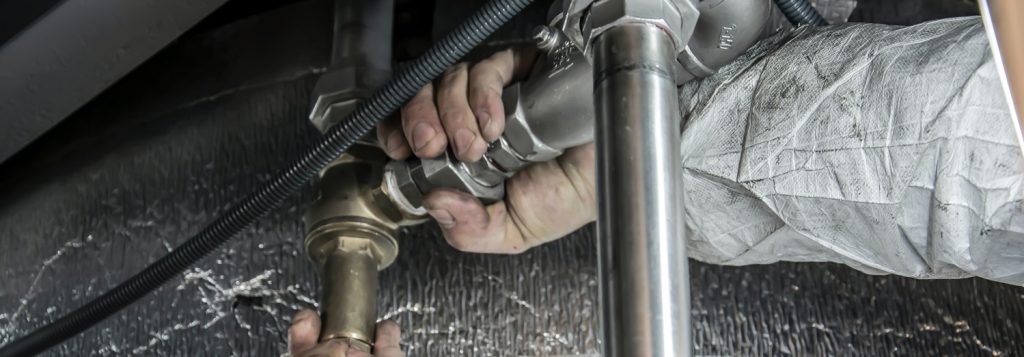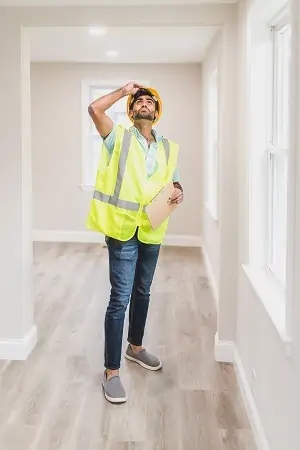
Buying a home? Wondering how much the seller has to tell you about its condition?
It’s an important question to ask, so let’s explore it.
Under the laws of most states, it’s a seller’s duty to inform a buyer about known “material defects” that could otherwise go unnoticed by the buyer. So, the homeowner’s agent provides a state-approved form, the seller’s property disclosure statement, to the homeowner. The form must be completed according to the owner’s first-hand knowledge of the home.
After declaring known, house-specific issues on the form, the owner discloses any anticipated impacts (negative or positive) on the property value and desirability. News of future construction planned in the area, or similar information, is pertinent. It’s best for a seller to be open about information a typical buyer would want to know.
What Are the Buyer’s Due Diligence Responsibilities?

The hopeful buyer should take time to examine the house, its landscaping, its history, and its surroundings before entering into an agreement with the seller. Information about the property is kept at the county recorder of deeds’ office. There, the prospective buyer can look for construction permits, zoning information, covenants and restrictions.
A seller’s disclosure is only a rough outline. Having a professional home inspection done is critical.
Can a contract for the home sale be signed first? Yes. A contingency in the purchase agreement can make closing dependent upon an acceptable inspection report.
Unlike an appraisal, an inspection is not an opinion on a home’s market value. But it can certainly impact negotiations around the buyer’s offer. A material defect could turn out to be a deal-breaker, or it could lead the parties to work out repairs or agree to a lower price for the home.
Especially when examining an older home, run all the systems and faucets to test them. Have a technician carry out a camera inspection of the sewer line and the ductwork. Have a separate inspection done by a roof specialist.
A home-buying client should ask to attend these inspections, and ask questions. Otherwise, the buyer will wind up with a thick report made up of lists of problems, without having the expert’s real-time take on the best approach to this or that recommended repair.
After closing, the buyer would be wise to re-read the inspector’s report, double-check the smoke alarms, and install new carbon monoxide detectors.
What Constitutes a “Material Defect” in the Eyes of a Home Inspector?
“Material” means significant. By definition under federal law (15 U.S.C. § 6602(4)), a “material defect” is one that substantially prevents something from operating or functioning as designed.
For the home inspector, a material defect is found when a home’s system or component has an issue that could significantly impact the property value, or pose an unreasonable safety risk. A home inspector must find and report all material defects in the visible, accessible home structure, its systems or its parts. (The report should notify the client home buyer where systems and structures were not examined because of inaccessibility.)
A material defect is one which is both observed and deemed by the inspector to pose a safety risk or jeopardize a real estate transaction — some material defects do one and not the other, but many do both.
– International Association of Certified Home Inspectors
What causes these issues? Faulty construction or installation methods, obsolete parts, neglect, or the passage of time. But just because a system is older doesn’t mean it has a material defect. The inspector makes the call. So, only material defects need to be noted in an inspector’s report, but inspectors do have the discretion to report additional items a buyer would want to know about. (An end-of-report summary may be used to flag the urgent issues.)
What Are Some Examples of Reported Defects?
A leaky, unfinished, or improperly finished roof could be a material defect because it adversely impacts the value of the house. Decay in a home’s architecture that could cause accidents and potential injuries is clearly a material defect. Water damage to decks, floors, walls and doors, unstable stairs, and exterior spaces that could be open to the elements or animals are all examples of commonly reported defects.
Problems with the foundation may be evident in sloped floors, bowed or leaning walls, or horizontal cracks. The inspector will also look for worn out studs, beams, and columns that could fail to support the weight they’re designed to bear. Such problems usually require another evaluation by a structural engineer.
Still more common findings include outdated electrical parts, blocked vents, fire or gas line hazards, faulty wiring, blocked and outdated fuse boxes, old utility connections, improperly rigged washing machines, and exterior issues like ponding or water infiltration.
Who’s Responsible for the Necessary Repairs?
Before the sale is final, the buyer can ask the seller to make repairs, or reduce the cost of the home to enable the buyer to take care of these unexpected costs. After closing, the situation shifts.
Home buyers can’t depend on a seller’s disclosure as solid protection against a later-discovered material defect. Why not? Because sellers aren’t required to tell the buyers about things they don’t know. If there’s a serious code violation in the home that the seller knew about (or should have known about), a buyer could exercise the right to sue the seller for nondisclosure or concealment. But even where it seems the seller absolutely must have known about the issue, proving that knowledge is another thing.
Some buyers ask their sellers to include home warrantees with the transaction for this very reason. But a home warrantee is unlikely to cover pre-existing conditions! So there’s a buyer-beware element to home buying, and the buyer should be financially prepared to handle a few surprise repairs.
Note: If you have questions about liability for a defect in a home, contact a local attorney for a consultation. Liability issues turn on a mix of case-specific facts, state law, and local practices. Only a lawyer with whom you have an attorney-client relationship is permitted to give you legal guidance. Material on this website is offered as general information only, and should not be construed as legal advice.
In some cases, repairs are the duty of a homeowners’ association (HOA). Structural or exterior issues could constitute defects of a multi-unit property’s common elements. If an HOA is in the picture, the buyer should consult the governing documents to find out how much of the repair cost will be covered by the association. Buyers should make sure that the HOAs they buy into are fiscally responsible and have a large enough reserve fund to handle major repairs for their properties.
What about the inspector? In some cases, inspectors are held liable for missing material defects in visible and accessible systems and components of the buildings they examine. For this reason, inspectors often tend to report more issues than they might actually be required to note. Some belong to plans that allow the buyer, under specific circumstances, to be compensated for defects missed in the inspection.
In almost all cases, home inspections do find issues. Buyers should expect this. Nevertheless, the inspection report is a vital part of understanding the history, safety, and value of a home. And it’s a helpful guide for maintaining the home well into the future.
Supporting References
Nick Gromicko, CMI® and Kate Tarasenko for the International Association of Certified Home Inspectors® (InterNACHI®, Boulder, CO): Material Defects Defined for Home Inspectors (citing InterNACHI’s Standards of Practice for Performing a General Home Inspection).
Vanessa Triplett Kuchulis for Miller Nash LLP: “Home Sweet Home”: The Impact of Urban Growth on Real Estate Property Disclosures in Oregon (Mar. 3, 2022; republished Mar. 4, 2022 at JDSupra.com).
Photo credits: Anil Karakaya and RODNAE Productions, via Pexels.
